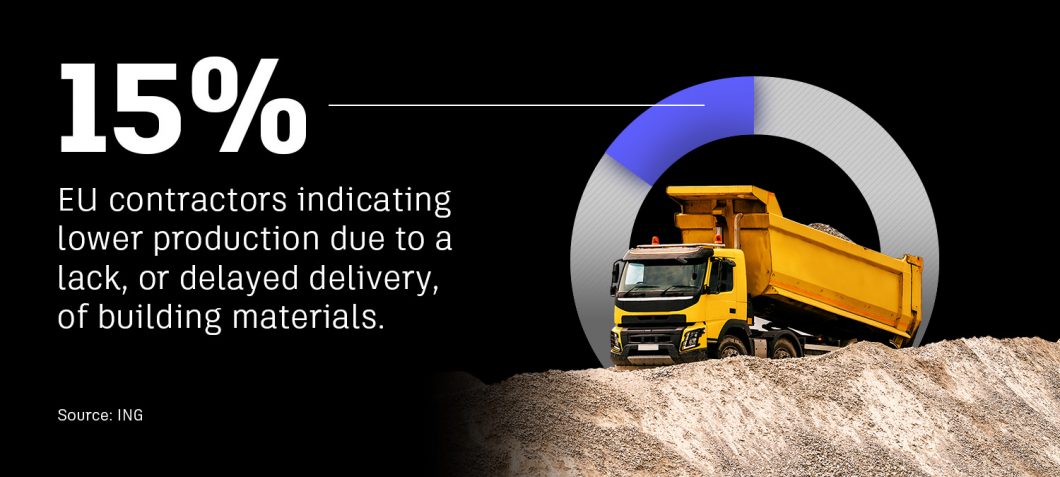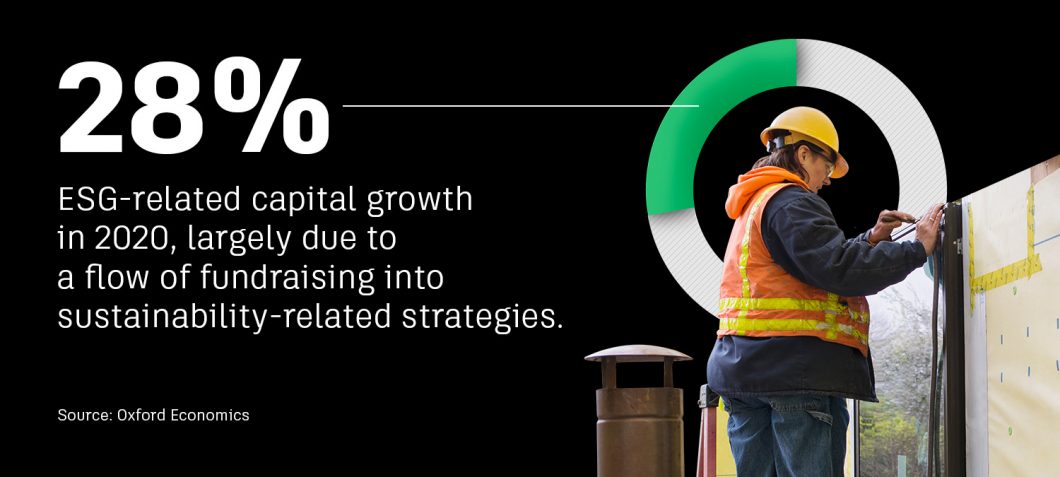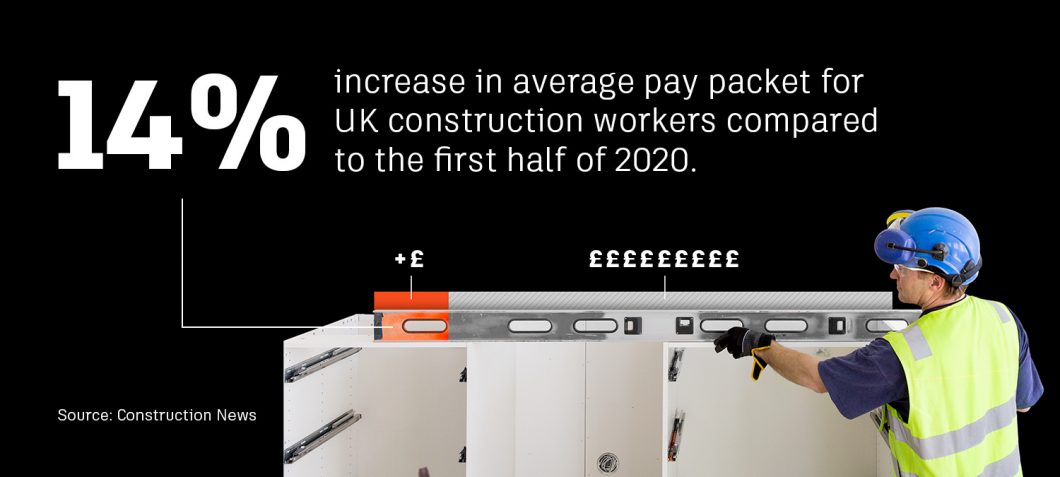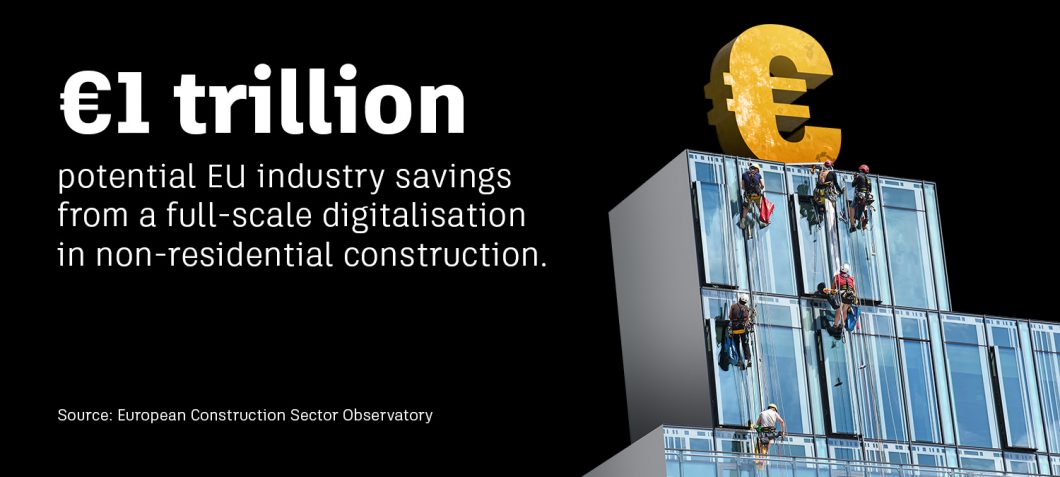Construction industry statistics and data are increasingly important as they help accelerate decision-making on and off the construction site.
Seventy-five percent of global construction industry stakeholders agree or strongly agree that the need for real-time decision-making is increasing at the project level. Data is the secret sauce to making those decisions quickly and strategically. It provides contextual information needed to move projects forward in the short term while offering a competitive advantage long-term.
And while project data is ideal for decisions in the present, relevant industry statistics can light a path in the dark for future decisions. Industry trends, both near and farsighted, are likely to impact your approach to preconstruction, technology investments, sustainability, risk analysis, workforce planning, budgeting, operational efficiency, and the list goes on. Add to that the compounding effect of the Covid-19 pandemic, which has served as both a significant challenge and powerful catalyst for growth in digital collaboration.
With these factors in mind, we’ve compiled a list of essential EMEA construction industry stats to help you better understand the landscape. These data points portray the current state of affairs while also forecasting what’s to come. We cover a several major themes, and if you’d like to dive deeper, we’ve also included to each of our sources so you can explore further.
These construction industry stats provide insight into:
- The current state of the industry at the global and EMEA-specific levels
- The fastest-growing sectors and areas of demand
- Current supply chain constraints, sustainability efforts, and workforce outlooks
- How a formal data strategy fits into addressing the listed challenges and opportunities
See statistics by topic:
General Outlook
- State of the industry
- Growth opportunities
Operational Challenges
- Supply chain
- Material costs
Sustainability Efforts
- Commitments and challenges
- Impact of technology on sustainability
Workforce Statistics
- Labor shortages and the impact of Brexit
- New approaches create new jobs
Rise of Technology
- The growing market for digitalisation
- Data strategy brings a competitive edge
State of the industry

- €11.6/£9.9* trillion estimated in global construction output by 2025. [Oxford Economics]
- Spending on construction accounted for 13% of the global GDP in 2020; it’s expected to reach over 13.5% in 2030. [Oxford Economics]
- The European Union’s (EU) total investment in construction in 2020 was €1.4 trillion or 10.7% of the EU’s GDP (€13.2 trillion). [FIEC]
- The European construction industry is expected to record a Compound Annual Growth Rate (CAGR) of 7.8% to reach €2.4/£2* trillion by 2024. [Cision]
- The United Kingdom (UK) is predicted to overtake Germany in 2023 in global output. The UK will remain the sixth-largest market after being overtaken by Indonesia in 2024. [Oxford Economics]
Growth opportunities
- The fastest-growing sector between 2020 and 2025 is forecasted to be infrastructure. The annual growth is expected to be 5.1% due to unprecedented levels of government stimulus driving medium-term growth. [Oxford Economics]
- Excess household savings (due to the pandemic) have led to an EU GDP expansion by an 8.5% annualized rate. [Oxford Economics]
- The demand for residential property is strong in Germany as a result of lowered mortgage interest rates due to COVID-19. As of Q2 2021, German banks have seen sales growth up to 30% compared to 2019. [ConsTrack360]
- The residential sector is the largest subsector driving short-term growth. It accounted for 44% of total global construction in 2020. [Oxford Economics]
Supply chain constraints and disruptions

- Fifteen percent of EU contractors indicate lower production due to a lack or delayed delivery of building materials. [ING]
- As of 12 November 2021, the average cost of shipping a 40-ft container across major trade routes year-to-date (04/11/21) is €6,373/ £5,436* per 40-ft container. This figure is €4,108/£3504* higher than the five-year average of €2,265/£1,932* per 40-ft container. Peak costs exceeded €8,738/£7,454* per 40-ft container (as of November 2021). [Drewry]
- Forty-four percent of construction companies in Germany reported problems procuring materials on time, up from less than 6% in March (as surveyed by the Ifo Institute in May). [Financial Times]
- Production in the German construction industry fell 4.3% in April from the previous month, despite companies in the sector reporting a record order backlog of €62 billion in March. [Financial Times]
Material costs
- In Q1 2021, the cost of construction materials in Europe rose by the fastest rate since 2004. In July 2021, 40% of concrete, cement, and brick suppliers said they expected to raise their prices even higher. [ING]
- Concrete rebar (59% higher than a year ago), fabricated steel (65% higher), and imported plywood (82% higher) show the strongest price growth in September 2021 compared to 12 months prior. [BEIS via Euroconstruct]
Sustainability commitments and challenges

- ESG-related capital growth in 2020 was 28%, largely due to a flow of fundraising into sustainability-related strategies. [Oxford Economics]
- Construction and demolition waste (CDW) produced in Europe accounts for 850 million tonnes. This is equivalent to approximately 60% of the total waste produced by Europe. [Oxford Economics]
- The built environment is responsible for around 40% of greenhouse gas emissions globally. [Oxford Economics]
- The European Commission announced in July 2021 that it will commit to a 55% reduction in greenhouse gas emissions (GHGE) from 1990 levels by 2030. [Oxford Economics]
Impact of technology on sustainability
- European construction businesses plan to invest an average of €900,000 in the next five years to become more sustainable, with seven out of 10 investing in construction. [Autodesk]
- Building Information Modeling (BIM) software offers possibilities to optimize the design phase and to deliver up to 15% less CDW. [Chalmers]
- BIM is one of the most common tools used in sustainability initiatives (36%), enabling owners and project teams to make more data-driven decisions. [Autodesk]
- Fifty-three percent of construction professionals say prefabrication has the greatest potential to reduce the industry’s carbon emissions. [Autodesk]
Labor shortages and the impact of Brexit

- Fourteen percent: the increase in average pay packet for UK construction workers compared to the first half of 2020. [Construction News]
- In 2021, 26% of EU contractors reported problems with labor shortages. [ING]
- Employment in the UK construction sector fell from 2.3 million in 2017 to 2.1 million at the end of 2020. This represents a 4% fall in UK-born workers and a 42% fall in EU workers. [Office for National Statistics]
- More than 500,000 UK-born construction workers are expected to retire in the next 10 to 15 years. [Financial Times]
- Official data from the Office for National Statistics reports that UK construction vacancies hit a 20-year high in August. [Construction News]
New approaches create new jobs
- 100,000: the number of direct jobs the commercial drones market growth is projected to create in the next 20 years. [ECSO]
The growing market for digitalisation

- €1 trillion: potential EU industry savings from a full-scale digitalisation in non-residential construction. [ESCO]
- In 2019, it was expected that the European BIM market would grow by 13% from 2016 to 2023, accounting for €2.1 billion of spend. [ESCO]
Data strategy brings a competitive edge
- Eighty-two percent: the percentage of European construction professionals collecting more data from construction technology today than three years ago. Still, 39% say that less than half of that data is usable. [FMI + Autodesk]
- Only 9% of businesses always incorporate project data into their decision making while 64% do this sometimes, rarely, or never. [FMI + Autodesk]
- On average, bad project data results in poor decisions 41% of the time. [FMI + Autodesk]
- €7.1 million: the amount of waste a €1 billion contractor could avoid by making decisions using accurate data [FMI + Autodesk]
*currency conversions provided by Morningstar via Google on 12 November, 2021
Get more insights into the industry
As these 30+ statistics have demonstrated, the industry will continue to experience big changes and developments. It’s the perfect time for construction firms to tap into that momentum and reap the benefits of taking a more strategic approach to data. To begin, benchmark your current construction process with our free assessment.
MEASURE NOW
The post 30+ Construction Industry Statistics for EMEA appeared first on Digital Builder.

